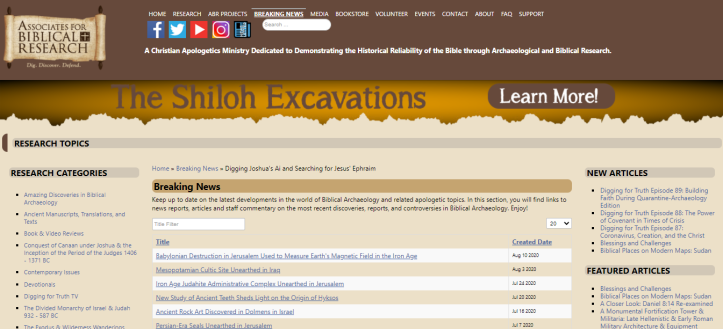
This month’s news from the world of biblical archaeology included stories about ancient Roman, Hittite, and Egyptian places/artifacts located in Israel, Turkey, and Egypt. Here were the top three reports in biblical archaeology in June 2021.
3. New Park at Ashkelon Will Open Israel’s Largest Roman Basilica

The Israel Antiquities Authority announced plans to renovate the Tel Ashkelon National Park so that a recently excavated 2000-year-old Roman basilica can open it to the public. The basilica, the largest of it’s kind yet discovered in Israel, was originally discovered in the 1920’s and fully excavated from 2008-2012 and 2016-2018. The structure was built during the reign of Herod the Great; Josephus records some of Herod’s building projects at Ashkelon, including a bathhouse, fountains, and colonnaded halls. The basilica was later renovated during the second and third centuries, before it was destroyed by an earth quake in AD 363. While Ashkelon is best-known in Scripture as one of the five Philistine cities, in the first century it was an important seaport near Judea.
OFF-SITE LINK: https://www.timesofisrael.com/ashkelon-park-renovation-to-unveil-israels-largest-roman-basilica-to-public/
2. New Study Suggests Reliefs in Turkey May Explain Ancient Hittite Cosmology
A group of scholars has proposed a new interpretation of the stone carvings at Yazılıkaya in modern-day Turkey, the site of a 3200-year-old, open-air Hittite shrine. The reliefs, which depict more than 90 figures, have been known for close to 200 years and are located with walking distance of Ḫattuša, the ancient Hittite capital. In the 20th century, the hieroglyphs with the reliefs were deciphered, indicating the figures represented deities, but an overall understanding of the site proved elusive. An international team of researchers from the Luwian Studies foundation, has proposed a model that understands the sanctuary to be a symbolic representation of Hittite cosmology, depicting their understanding of the underworld, earth, and sky, as well as the cycles of the moon and changing seasons. They believe the reliefs depict a procession of Hittite gods, with the supreme deities at the center, which is situated due north. According to their theory, the supreme gods are associated with the circumpolar region of the sky, where the stars never disappear below the horizon. The scholars have concluded that the Hittite belief system had similarities with the beliefs of those in ancient Egypt and Mesopotamia. Some critics, however, have noted that the team’s interpretations are based more on texts from surrounding nations than on Hittite texts, which say little about astronomy. Hittites are referred to over 45 times in Scripture, but only a handful of these relate to the Hittites from the Anatolian region of modern-day Turkey. See the link below to read Dr. Bryant Wood’s important article on Hittites in the Bible.
OFF-SITE LINK: https://www.jpost.com/archaeology/crazy-archeological-find-is-there-an-underworld-under-the-earth-671590
1. Stela of Pharaoh Hophra Discovered in Farmer’s Field

A stela naming the Egyptian Pharaoh Wahibre (known as Hophra in Hebrew, Apries in Greek) was recently found by a farmer who was cultivating his field; he immediately turned it over to the Egyptian Ministry of Tourism and Antiquities. The stela is carved out of sandstone and has the winged sun-disk and the cartouche of Wahibre on the rounded lunette at the top. Wahibre (Hophra/Apries) was a pharaoh of the 26th dynasty who ruled from ca. 589–570 BC. Egyptian Antiquities authorities believe the stela was erected during one of his military campaigns towards the east. Pharaoh Hophra is mentioned in Jeremiah 44:30, which reads, “This is what the LORD says: ‘I am going to hand Pharaoh Hophra king of Egypt over to his enemies who seek his life, just as I handed Zedekiah king of Judah over to Nebuchadnezzar king of Babylon, the enemy who was seeking his life.'” Moreover, the stela was discovered in Ismailia, Egypt, only 29 miles south of the ancient city of Taphanhes, where Jeremiah had been taken (Jer. 43:6-7) and from where he made the prophecy against Pharaoh Hophra (Jer. 44:1).
OFF-SITE LINK: https://www.egypttoday.com/Article/4/104683/Egypt%E2%80%99s-Ismailia-Museum-receives-a-sandstone-stela-dating-back-to
Stay Up-To-Date
Get the latest BREAKING NEWS in biblical archaeology each week here: https://biblearchaeology.org/current-events-list

